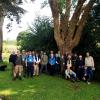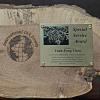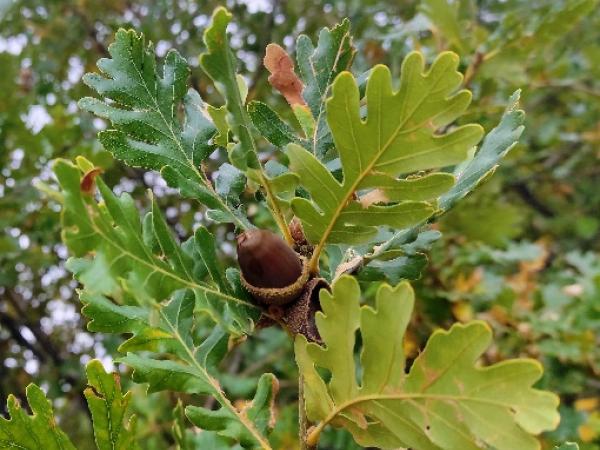Editor's Picks
Plant Focus
Since the beginning of 2023, the research team of the Taiwan Academy of Ecology has been continuously exploring the transitional zones and boundaries of the southeastern Taiwan Fagaceae forests. The investigation revealed that the predominant vegetation consists mainly of secondary, artificial, and patchy fragmented forests. Reflecting upon the waves of historical damage caused by activities such as camphor tree (Cinnamomum camphora) logging during the Japanese Era, agricultural and pastoral expansion during the era of the Kuomintang party, and the devastating effects of the "forest type conversion" policy in the 1970s,1 it is evident that the majority of the original forest ecosystems have been destroyed. Consequently, the remaining Fagaceae forest in the Anshuo region has become significantly important.

Following the International Conservation Symposium on March 31st, the Taiwan Academy of Ecology initiated a petition campaign titled "the Preservation of the Fagaceae Forest in Taiwan". Support poured in from concerned individuals across the country, accumulating a total of over 5,000 supporters. Through visual media, we conveyed the forms, ecological significance, and evolutionary journeys of numerous rare and endangered species, allowing people to share their admiration of nature. After a month, a turning point was finally reached.

On May 23rd, the Taitung County Government discovered that the excavation carried out by the local farm exceeded the approved scope, leading to a determination of illegal activity and imposing a fine of $1,000,000 New Taiwan Dollars (about USD 33,000). On June 2nd, the Executive Yuan responded to a letter from the International Oak Society, stating that the government has begun efforts to protect these endangered species and habitats while planning for more effective measures to prevent resource destruction. On the same day, the Legislative Yuan convened a coordination meeting, clarifying the intentions of the responsible authorities and setting short-term conservation goals for relevant departments. On June 5th, the President of the Taiwan Academy of Ecology met with the President of Taiwan to express concerns over the crisis facing the Fagaceae forest and the vision for conservation. Both the President and the Executive Yuan responded positively, pledging their commitment. On June 9th, the Legislator Sun-Han Hung, representatives from the National Property Administration and the Forestry Bureau, along with NGO groups, once again conducted an on-site survey in Anshuo. Confronted with the devastated nucleus of the Lithocarpus chiaratuangensis2 region and the lifeless remains of numerous Fagaceae species, their determination to address this historic shared responsibility seemed to grow stronger.

Currently, multiple government departments have expressed their support, and the Forestry Bureau and the National Property Administration are willing to reach a consensus to address land ownership and responsibilities. Firstly, in the case of land without lease agreements, the land will be promptly transferred to the Forestry Bureau. For leased land, priority will be given to the protection of forests that have not been logged (although classified as agricultural and pastoral land, they have undergone over 30 years of natural succession and have become forests). Regarding land that has already been logged, priority will be given to penalizing the violators. Furthermore, the "National Land Planning Act" (scheduled to be implemented in 2025), which is formulated in response to global climate change, must incorporate the significant discovery of the Fagaceae primitive forest. The Taitung County Government has already initiated the process of designating agricultural development areas (agricultural land in mountains) as conservation areas.




After three years of effort, the Fagaceae forest of southeastern Taiwan is gradually gaining visibility. Throughout the ages, it has been the core of the entire Taiwanese Fagaceae family, possessing a rich genetic pool and diversity. In future generations, they will serve as a protective barrier against global warming, with value and functions that humankind is not able to replicate. The movement to save the Fagaceae forest is arduous and lengthy, and we will continue to monitor the operations of various forces in the area and collaborate with society in every possible way to protect this fertile land. If you are willing to support the conservation of the Fagaceae primitive forest, you are welcome to join the petition using the link below:
Petition for the Preservation of Fagaceae Forests in Taiwan
1 In 1965, the forestry authority initiated the so-called "forest type conversion" policy, categorizing Taiwan's natural broadleaf forests as "miscellaneous tree forests" or "inferior forests" deemed economically worthless, and subsequently transforming them into artificial forests to align with economic interests.
2 Currently considered a synonym of L. harlandii.















